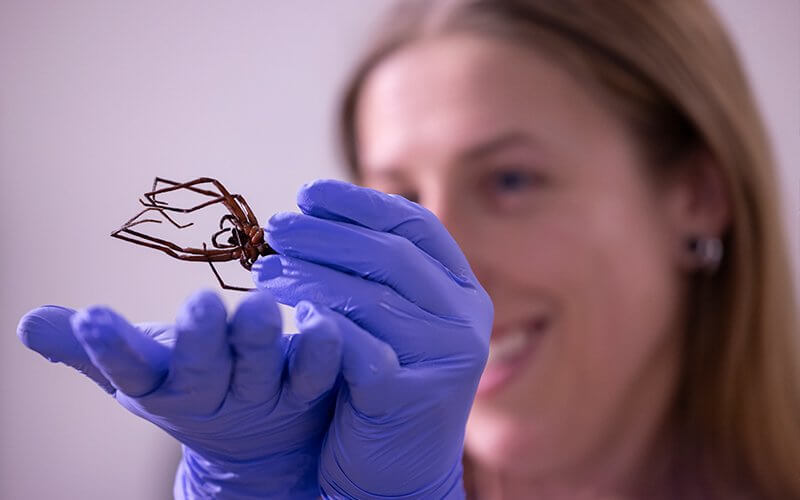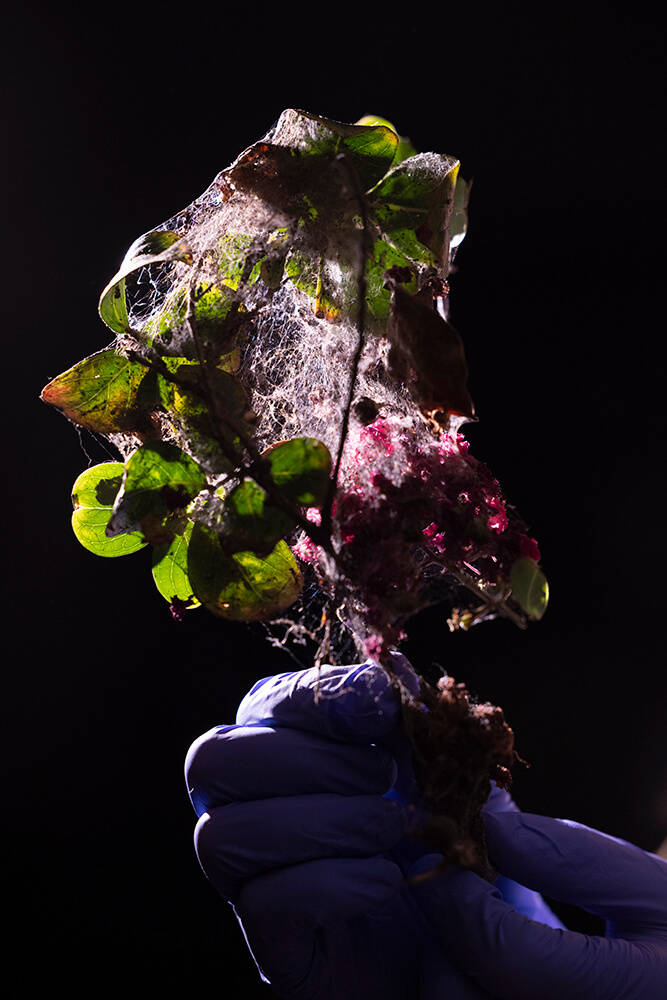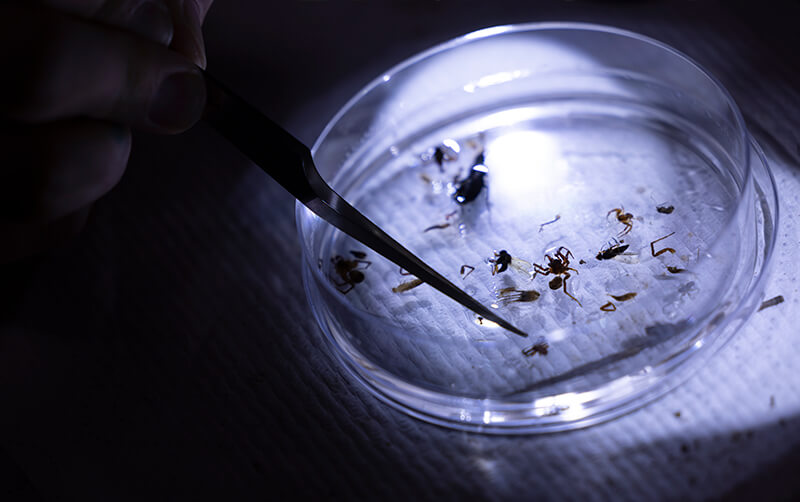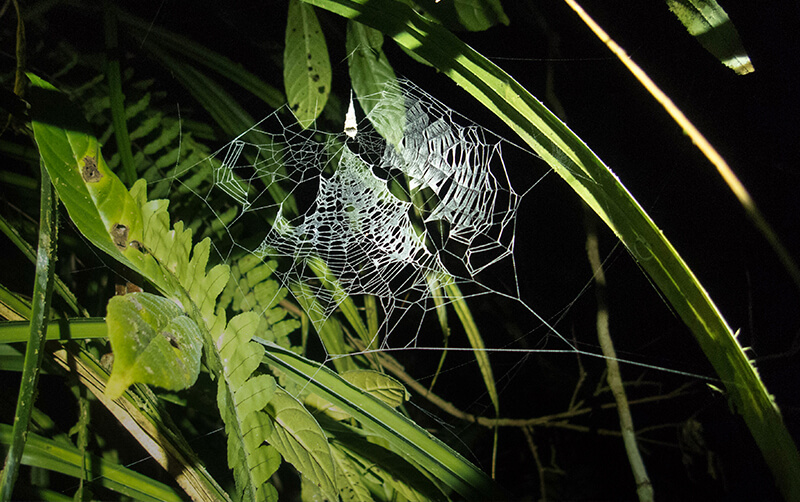
Cal State Fullerton arachnologist Anna Holmquist’s fascination with spiders and other arthropods began at a young age.
Holmquist became intrigued by the sheer diversity of spiders and weaved her way into the importance of studying the creepy-crawly creatures.
“The use of webs for prey capture was a particular interest. I was captivated watching their behavior,” said Holmquist, assistant professor of biological science.
Holmquist specializes in the study of arthropods — spiders and insects. She shares her enthusiasm for the eight-legged creatures and six-legged insects with her students through lectures, fieldwork and laboratory research.

This fall, Holmquist and her students are researching a Southern California social cobweb spider, called Anelosimus analyticus, and their response to the effects of urbanization. The project offers students the opportunity to learn about population genetics and community ecology.
The species is in the same family as black widows and build large, complex tangled webs that incorporate leaves and other materials. Within these webs live multiple individuals of varying ages, which is important for spiderlings, or baby spiders.
“A small number of spider species demonstrate social behavior and live communally, rearing young and sharing food items,” she said. “I’m interested in examining intraspecific communal behavior and interactions with other cohabitating species.”
Other student-focused research projects planned include understanding the impact of wildfires on arthropod communities; identifying and documenting spiders from Indonesia; and digitizing the College of Natural Sciences and Mathematics’ entomology collection.

Holmquist teaches the Principles of Ecology course and uses examples of spiders and other arthropods in every lecture.
“I use the vampire spider, a species of jumping spider that specializes on blood-fed mosquitoes, to discuss ecological specialization and spider behaviors that benefit humans,” said Holmquist, who fittingly published the scientific article, “Finding Spider Woman: The Past and Present Role of Women in Arachnology.”
She also teaches about the brown widow, a common local spider introduced to the region in the 2000s. Holmquist shared that most spiders are not harmful to humans, including the brown widow.
Holmquist added the reason for the surge in the spider population during fall months, including around Halloween, is because it’s mating season and follows the increased access to insect prey during summer months.

With over 50,000 described spider species, and many more left to be discovered, Holmquist has some favorites like Fecenia spiders. She learned about the spider as a U.S. Student Fulbright researcher in Sulawesi, Indonesia, during her doctoral studies.
She investigated spider biodiversity and studied the long-legged Fecenia spiders that build a unique web using a dry, non-sticky silk that resembles a sheet oriented upright.
Another favored by Holmquist, is Hyptiotes, a genus of spiders that belong to the family Uloboridae. They’re the only family of spiders without venom glands and use their webs like catapults to capture prey.
“They build a triangular web, sit at the vertex of the web and release the web when prey hits the silk to tangle the prey,” said Holmquist, who earned a doctorate in environmental science from UC Berkeley.
Holmquist also holds a bachelor’s degree in zoology and a minor in entomology from North Carolina State University, where she began her arachnological research.
“Spiders and insects play integral roles in ecosystems as pollinators, predators, herbivores and more. We need more understanding about their evolution and ecology, especially in this era of rapid global change.”